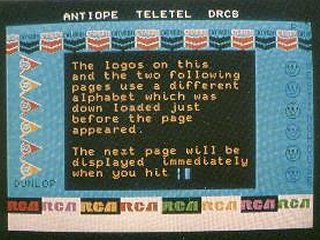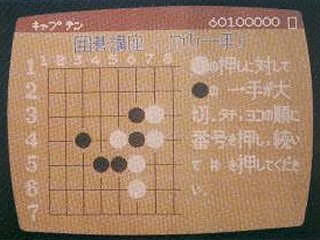 |
The Teletext Museum. |
|
|||||||||||
TELETEXT OUTSIDE THE UK
Following the development of the UK teletext system work began in the late 70s to adapt the principles of data broadcasting to display information for use in other countries.
|
In the USA, two forms of "UK-style" teletext were proposed; one worked as the UK system does but broadcasting one line of 32 characters per TV line, the other used a 40 character per line system (as the UK system does), broadcasting part of a line per TV line. (The differences were necessary because of the differences in the format of the TV signals in the two countries.)
A conventional mosaic graphics page (like Ceefax) |
 |
|
The French system used a different
presentation method. Their system,
called Antiope, sent information in
packets and allowed for dynamically
redefinable character sets, so a
much wider range of information
could be displayed.
A sample of Antiope |
 |
|
In 1981 a joint specification based
upon Antiope was proposed by France,
Canada and the CBS network in the
USA. This eventually became NAPLPS
(North American Presentation Level
Protocol). This described the page
layout and graphics and worked more
like the "digital teletext" services
being introduced nowadays than the
UK teletext system. A subset of the
protocol was described for teletext
use but it is unclear whether this
method was actually used for
broadcast services. The system was
trialled for Viewdata ("teletext over
the 'phone") in competition with
"UK-style" (like UK teletext)
Viewdata.
A sample DRCS page |
 |
|
Work also took place in Japan on a
graphical presentation of teletext,
there to cater for the requirement
to display Japanese language
characters. Their system was called
Captain and trials started in 1979
(though it is unclear whether it
ever reached broadcast stage or was
only ever used for Viewdata).
A sample Captain page |
 |
|
The illustrations here are taken from
the book The Architecture of Videotex
Systems by Jan Gecsei, University of
Montreal (published by Prentice-Hall
Inc, ISBN 0-13-044776-5) and show
differences in the way information
is displayed by the various systems
A sample Telidon page (Geometic coding) |
 |
Teletext Gallery: Around the World | Teletext on the Internet
|
|||
|